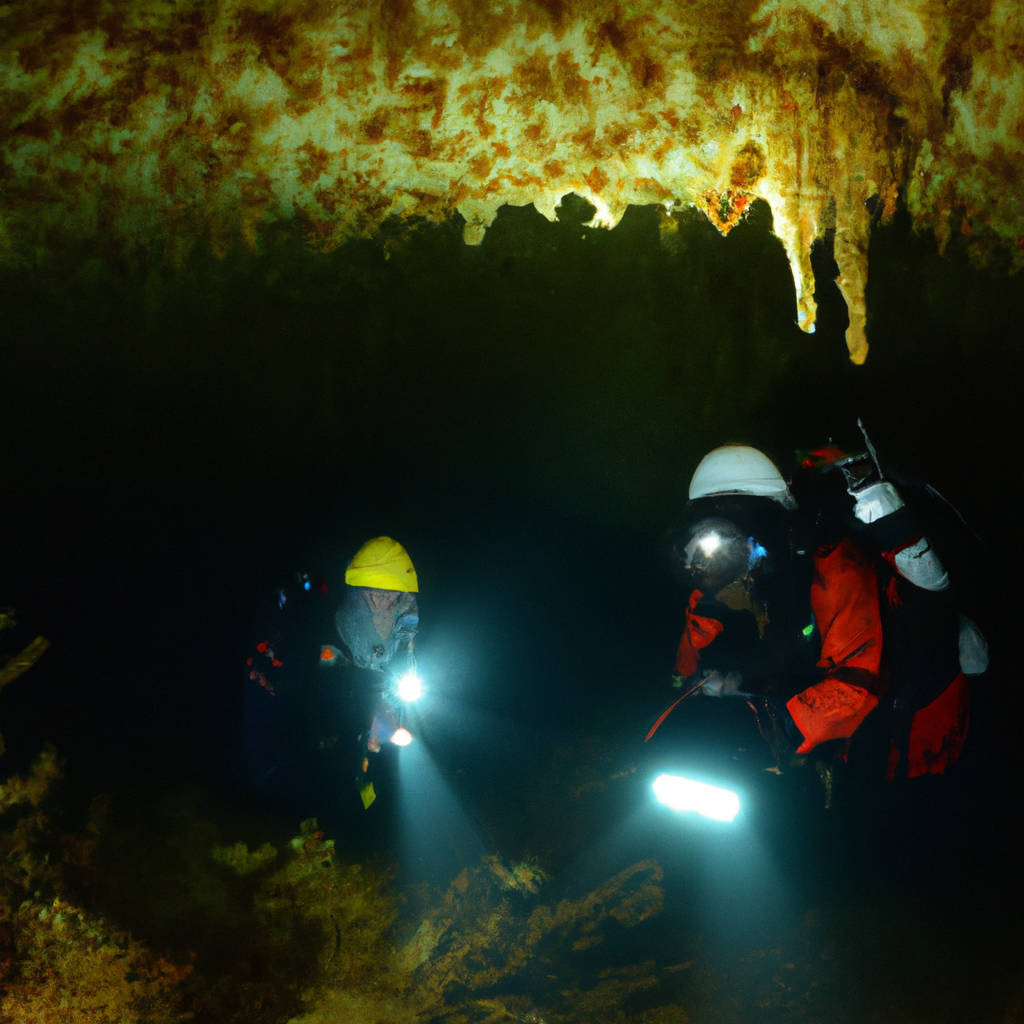Scientists have recently unveiled exciting revelations about an underwater cave, the depths of which had previously remained unexplored and unknown. This extraordinary discovery, made by a team of international researchers, has captured the attention of the global scientific community, offering fresh perspectives into the unique ecosystems that inhabit these underwater realms.
Beneath the serene surface of the ocean, the team embarked on an audacious journey into this submerged cavern, armed with cutting-edge technology and an insatiable curiosity. Their exploration revealed a labyrinthine network of tunnels and chambers that extended far beneath the seabed, reaching depths previously unfathomed. The data collected by the scientists showed that the cave system was far more complex than initially suspected, with a network of passages that stretched for kilometers.
Hidden within the dark, murky waters, the scientists discovered a myriad of unique and even unrecorded species of aquatic life, each adapted to survive in the harsh and unrelenting conditions of the underwater abyss. The cave was teeming with life, from bizarre, glowing organisms to colossal creatures that lurked in the shadows. The scientists were astounded by the diverse array of life forms that existed in such a challenging environment, providing them with invaluable insights into the adaptability of life.

The cave also proved to be a treasure trove of geological marvels. Intricate stalactites and stalagmites adorned the cave walls, their formations narrating the story of the earth’s climatic history over millions of years. Precious minerals and rare geological formations were discovered, further enhancing our understanding of the planet’s complex geological processes.
The revelation of the cave’s uncharted depths has also sparked interest among archaeologists and historians. The scientists found evidence of prehistoric human activity within the cave, including primitive tools and remains, suggesting that our ancestors may have used these caves as shelters or as ritual sites. These findings offer tantalizing glimpses into our ancient past, promising to shed new light on the lives of our earliest ancestors.
This underwater exploration has not only expanded our knowledge of the earth’s underwater terrains, but it has also underscored the importance of preserving these fragile ecosystems. The discovery of the uncharted depths of the cave has illustrated the vast amount of life that remains hidden beneath the ocean’s surface, emphasizing the need for further research and conservation efforts in these environments.
Despite the inherent risks and challenges associated with underwater exploration, the scientific team’s determination and resourcefulness have paid off, resulting in a monumental discovery that has significantly contributed to our understanding of the world beneath the waves. The uncharted depths of the underwater cave represent a new frontier for science, beckoning with the promise of more extraordinary discoveries to come. The exploration of the cave is a testament to human ingenuity and the relentless pursuit of knowledge, proving once again that our quest for understanding the mysteries of our planet is far from over.
An Unfathomable Depth
In the realm of human understanding, an unfathomable depth exists, a profound abyss so profound that it transcends human comprehension. This depth is not only physically manifested in the cosmic black holes or the ocean’s deepest trenches but also metaphorically in the intricate complexities of human emotions and the mysteries of our universe.
It is the depth of knowledge yet to be discovered, the depth of human potential yet to be explored, and the depth of connections that weave the tapestry of our existence. It is in the silent whispers of the unexplored cosmos and the echoing depths of the human psyche where we find this depth. The unfathomable depth is an enigma, a mesmerizing maze of endless questions and infinite possibilities. It is the realm of the unknown, the uncharted territory of science, philosophy, and spirituality. It is a realm where the mind confronts its limitations, where the heart encounters its deepest fears, and where the soul embarks on a journey of self-discovery.

The unfathomable depth challenges us to venture beyond our comfort zone, to dive into the deep end of curiosity, to question, to seek, and to understand. It is a realm that compels us to transcend our limitations, to push the boundaries of our knowledge, and to unlock the secrets of our existence. In this depth, we discover the essence of our humanity, the beauty of our vulnerability, and the strength of our spirit.
The unfathomable depth is a testament to our innate desire to explore, to understand, and to grow. It is a symbol of our journey as a species, a journey marked by curiosity, resilience, and the relentless pursuit of knowledge. It is a depth that is not meant to be fathomed but to be embraced, a depth that is not meant to confound but to inspire, a depth that is not meant to intimidate but to enlighten. It is, indeed, an unfathomable depth.
Exploring the Abyss
In the scope of human exploration, the abyss remains one of the few uncharted territories. These deep, dark recesses of the ocean hold an array of mysteries that have fascinated and perplexed scientists for centuries. The term ‘abyss’ refers to the zone of the ocean that stretches from 3,000 to 6,000 meters below the surface, a realm where sunlight can’t penetrate and the pressure is immensely high. The conditions here are incredibly harsh, with temperatures close to freezing and a total lack of light making it a challenging environment for life to thrive. Yet, against all odds, a myriad of strange creatures call this hostile environment home.
The exploration of the abyss is not without its challenges. The immense pressure, the chilling temperatures, and the complete lack of light make it a hostile environment for humans and our technology. Submersibles designed for abyssal exploration must be built to withstand these extreme conditions, and the technology required to capture clear images and data is constantly evolving.
Despite these obstacles, the allure of the abyss is undeniable. It offers a unique insight into life’s adaptability and resilience in the face of extreme adversity. From bioluminescent creatures that create their own light to cope with the perpetual darkness, to species that can withstand the crushing pressure, the abyss is teeming with life. Each new expedition into the abyss brings with it the potential for groundbreaking discoveries, from new species to insights into how life can exist under such harsh conditions.
In our quest to understand the world and the universe beyond, the abyss stands as a testament to the unyielding spirit of exploration. Despite the challenges it presents, we continue to delve into its depths, driven by an insatiable curiosity and a thirst for knowledge. The abyss, in all its darkness and mystery, is a reminder that there is always more to explore, more to learn, and more to understand about our incredible planet.

The Challenge of Measuring Depth
Measuring depth represents a significant challenge across various fields, including oceanography, geology, medicine, and technology. The difficulty arises due to the inherent complexity and variability of the environments where depth measurement is required.
For instance, in oceanography, factors such as water pressure, temperature, and salinity variations can affect the accuracy of depth readings. In geology, the heterogeneity of the earth’s layers and the presence of different types of rocks and minerals make depth measurement a formidable task. In medicine, specifically in imaging techniques like ultrasound or MRI, measuring the depth of organs or tumors within the body is influenced by the patient’s unique anatomy and the quality of the imaging equipment.
In technology, especially in the field of 3D imaging and virtual reality, accurately measuring depth is crucial to creating a realistic user experience, yet it is complicated by factors such as lighting, perspective, and object movement. Therefore, the challenge of measuring depth is multifaceted and requires an understanding of various scientific principles, as well as the development of advanced tools and techniques.
Despite these challenges, the importance of accurate depth measurement in advancing scientific knowledge, improving medical outcomes, and enhancing technological innovations cannot be overstated. Therefore, it is a challenge that researchers and practitioners in these fields continue to grapple with, driving the ongoing quest for more accurate, reliable, and efficient methods for measuring depth.
